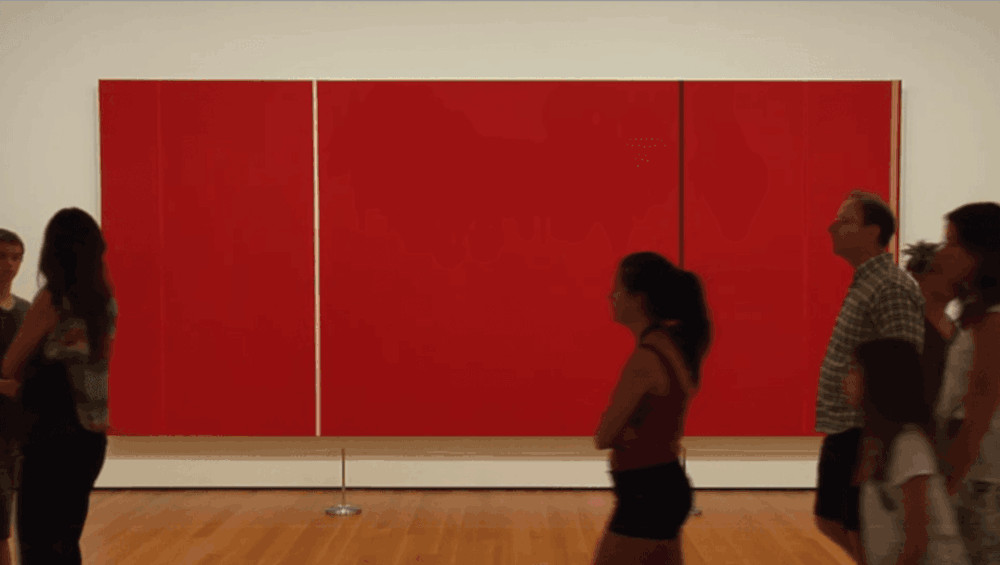Many art movements were born during the 20th century, and I can’t go into them all, but one was the Abstract Expressionists (AbEx). I’ve been looking at them through the Museum of Modern Arts online course at Coursera, presented by Corey D’Augustine. In the Studio: Postwar Abstract Painting

It was a fascinating look at the methods, history and personalities of these groundbreaking artists of New York in the last century—people Like Jackson Pollock, Mark Rothko, Barnett Newman, Agnes Martin and more. I learned to see art as more than just an image on a canvas, more than just a landscape figure or still life. I also learned to see art differently and what it could be.
I was again forced to ask myself why I created art. What Ab Ex did for me is expand my horizons on what abstract is about what it’s for. Below are a few notes of what I learned and what questions I ponder over.
Art as an experience
One thing some artists do is play with the experience of the patron looking at the art. What these artists were doing is recognising their art is more than just the scene on the canvas. But seeing the painting, sculpture as an object used in a context, a museum or gallery. Such a setting affects how we view the work, just as watching a film in a cinema is different than watching it at home.
The display area becomes part of the experience of art just as much as the object, painting itself.
One example is Barnett Newman – The Wild. A piece of lumber painted. We see it against the backdrop of the wall is fixed to. So in this way, the wall becomes part of the art. Making it more of an installation piece.
We never experience art in isolation, it’s always in a context of, a space, a time, a life. It’s seeing art not just an image, but more like a nightclub or a concert, which are temporary installations of lights, music, dance.
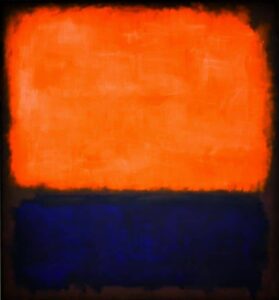
Playing with perceptions
Another way these artists played with us was through our perceptions, making the foreground/background distinction ambiguous. This is flattening the space.
Artistic skills can make 2D canvas look 3d. Traditionally, art had a foreground, sometimes an object, against the backdrop of a background. But this rule or convention can be rejected.
Abstract art often plays on the fact that it’s a flat canvas, not a window out, not a 3d world beyond. An example is some of Mark Rothko’s work, setting colours against each other so you are not sure which fields are towards you and which are moving away.
Attention
Another method was to play with your attention through where your eyes move. Most paintings have a focal point, which the painting leads the eye towards. But abstract art can have many points or none at all.
Jackson Pollock’s network of drips has no focal points, instead, your eye roves over the whole canvas, noting details and events as you go along. A similar roving eye is found when you look at Yayoi Kusama Infinity net paintings.
Such lack of focus leads to more chaotic experiences as your eyes jump all over the canvas, with nowhere to rest. It’s art that is uncomfortable and chaotic.
Another example was the instruction that patrons should get closer to the paintings so they fill their vision. Doing so can affect how you see the canvas differently than what’s typical, looking at it from a distance. It’s not new to the AbEx; Claude Monet tried it with his vast waterlily paintings towards the end of his life. By being so close to that painting, filling your whole vision, it’s no longer an object against a background. But more immersive, like a predecessor to Virtual Reality goggles.
Or like Ad Reinhart and his ‘black paintings’, which made colour something you had to search for. Because of the way he mixed paint, the colour was on the very edge of perception. You had to be patient and sit in front of the canvas, looking closely to see it. Such patience is something only some people have; they want the answer immediately and clearly.
It reminds me of Zen Koans and the seemingly confusing queries they ask. The answers are not clear and not immediate. They require more introspection. Such art rewards those who take the time to look closer, a lesson for us all in today’s fast-paced world.
Colour
Bolder colours are often seen as part of abstract art, but Rothko and his layered high chroma, saturated paints made the colours seem far more intense more impact, and heightening the emotion. Such bold colours give me the incentive to use bolder palettes in my work.
This use of bold colours was not new, it dates back towards the Impressionists and Post-Impressionists. But with abstract painters often use strong colours because they no longer have an image or form to do the heavy lifting. So colour becomes another avenue to convey a meaning.
Confounding Expectations
‘From music people accept pure emotion, but from art they demand explanation’
Agnes Martin
Abstract art is often controversial because it challenges our preconceived ideas about art. Abstract painters are asking us to set aside our expectations, prejudices and experience their art for what it is, not what we want or expected it to be.
People are lazy, they want an answer fast and clear, unwilling to put in any work. It’s as if they’re babies screaming to be spoon-fed.
Partly it’s the breaking of the technical rules I have outlined elsewhere. A focal point, foreground-background distinction, realistic drawings, recognisable form, a 3d space and more.
Breaking such rules compelled people to ask if it’s art that was created.
‘The great and fatal pitfall in the art field and in life is dependence on the intellect rather than inspiration’
Agnes Martin
When people claim they don’t get modern art I cringe at their egotism. It’s as if they strut around expecting everyone and everything should make sense. If it doesn’t then it must be wrong, worthless, divisive, subversive etc. No-one, nor the cosmos is here to meet their expectations.
So trapped by their expectations they fail to see a reality beyond them. Failure to see reality for what it is, the Map is not the terrain.
This is what makes abstract and conceptual art important. It does more to ask questions and challenge our assumptions. Something Buddhism does, and some of the Abstract Expressionists were interested in Eastern spiritual, religions traditions. (see below).
Importance of the process
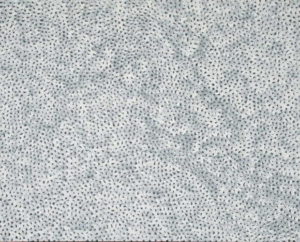
When I’m painting, I’m not aware of what I’m doing. It’s only after a get acquainted period that I see what I’ve been about. I’ve no fears about making changes for the painting has a life of its own.
Jackson Pollock
What I have learned from this exposé is why we create art is far more than depicting a scene, or expressing emotion. How abstract art is created is jut as important as the finished product.
Mistakes
Different artists have different attitudes towards aesthetics. Some like the accidents that happen when we paint, whilst others don’t. That is drips, a mistakes in lines, the imperfections that come with hand made items. Some embraced the randomness others did not. But it’s a part of abstract painting.
Evolved
These paintings were not planned but evolved in their own way, as a dialogue between the artist and the art. They are iterative and introspective. It isn’t exclusive to abstract art. No artist is quite sure how the work will turn out, and you have to adjust and improve as you go along.
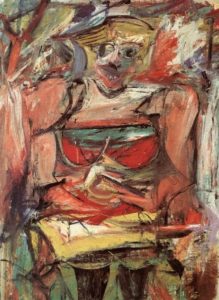
But abstract art is often about abstract concepts like justice, love, meaning, truth, and emotions. Unlike traditional painters, who work with a mostly fixed way of creating a painting. A palette and a methodology of drawing out a composition, then the big shapes, then the details, etc. Abstract art is often experimental, spontaneous and evolutionary.
A landscape or still life can be used as a beginning point, not an ending. Making an accurate drawing doesn’t follow here, as it’s about something other than trying to imitate or copy.
Materials
‘Flesh was the reason why oil painting was invented’
Willem de Kooning
Abstract artists are also more interested in the materials themselves as an accompaniment to the process. They wanted to learn what could be done with different materials and often used various tools and mediums.
For example, different paints, like traditional Oil to Acrylic, and even house paint from a homeware store. A multitude of tools to apply paint/ink to a surface, from brushes to dripping the paint, rags, hands, pens and more.
This focus on materials is a feature of abstract artists and one I am drawn to. It’s why I’m not a digital painter. I like the tactile feel of the tools and material; it connects me to reality like a digital tablet would never do.
The Mark of the artist
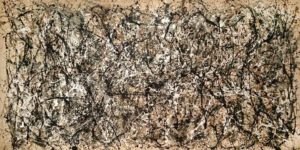
‘I want to express my feelings rather than illustrate them’
Jackson Pollock
For some artists, the gestural mark-making and brushwork reveal the artist’s hand. Some, like De Kooning and Klein, are gestural, action painters; the marks they left behind are a record of their creative process. A ‘residue’ of the event, Harold Rosenberg called it, when artist and art co-exist.
Most art is like this; you can see the handiwork in the painting as an expression of the artist. However, Ad Reinhart’s ‘black paintings’ avoided visible brushstrokes because he wanted his art to be purely impersonal, without any record of himself in the work.
Art as a spiritual experience
‘Today painters do not have to go to a subject matter outside of themselves. Most modern painters work from a different source. They work from within.’
Jackson Pollock
For many of these artists, experiencing art or its creation was a spiritual experience. It’s the ‘art of philosophy’, art for spiritual understanding. The aesthetic experience and invoking emotions and insights can be what art is about, more than just depicting a scene. ( MoMA | The Sublime and the Spiritual)
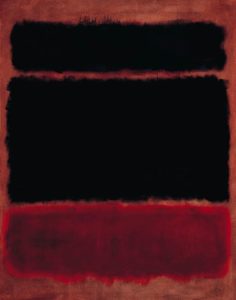
One way is the spontaneity of painting, not having a worked out endpoint or goal, instead ‘going with the flow’, seeing a work unfold over time, the evolutionary process (see above). Creativity is not a pre-scripted path but seeing how things unfold step by step. Because we let go of control, our goals, of clarity and let the chips fall where they may. All of which are scary in their way.
What strikes me about their many abstract artists is an interest in Eastern religions like Buddhism (particularly Zen), Daoism, and the works and ideas of Carl Jung. These ideas were growing in popularity at the time, and the ink art of landscapes, bamboo, birds, and fish was in the Sumi-e style.
It’s simple but also seeks to go beyond what has been stated. It points to the spiritual; the landscape, a tree, and a waterfall have this symbolic aspect to them.
As Picasso said, ‘We all know that art is not truth. Art is a lie that makes us realize truth at least the truth that is given us to understand. The artist must know the manner whereby to convince others of the truthfulness of his lies.’
Abstract art can be like that: a minimalism, a simplicity, the idea that life is far less complicated than the whirlwind of change and complexity our lives exhibit daily. Stripping existence down to its salient core, it’s an unadorned state, its natural state, the here-and-now.
Something I can personally appreciate and embrace as I search for what matters most and discard or ignore what’s not.
Rothko, in particular, had a more reflective feel to his painting, a quiet immersion into colour and texture. It reminds me of looking into a fog or a still water surface and the unmistakable spiritual, mystical message such imagery conveys. Rothko uses mystery to suggest a spiritual, introspective experience. It piques our curiosity, scary and compelling as a fog.
‘Silence is so accurate.’
Rothko
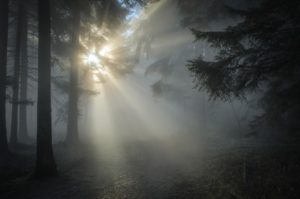
His art reminds me of Whistler’s London Nocturnes, stillness, characteristic of late at night, the dusk and before the dawn, away from the bustle of the day.
The AbEx and abstract artists generally think of their work as something to be patient with and to keep experiencing, and you will notice something more. They reward those who have the care, patience, and open-mindedness to keep looking, to see beyond the superficial glance, the cursory examination.
Art, in an unfolding experience, is more akin to mindfulness and meditation. It’s also about direct aesthetic experience and what arises during that experience, not the intellectual understanding of what you get beyond words and explanations.
The Link to Buddhism
What it says to me is the message of Buddhism, Tathātā, To grasp reality for what it is, not what you wish it to be (See expectations above). It’s why some AbEx artists use bland titles like simple numbering. To avoid giving the viewer preconceived ideas and expectations that influence their experience.
I see a lot of parallels between art and eastern regions, none more so than abstract art. The answers I found in Buddhism and Daoism were counter-intuitive and unexpected; Abstract art has done the same and challenged my assumptions and preconceived ideas.
I like abstract art as a genre, but it’s challenging to make or appreciate because there’s often no object to focus attention, no obvious message.
This course helped me realise there is far more to art than I imagined. The methods, the artist’s motives, and the patreon who looks at the art. Why we create, what we create, and who for. Also, what do we expect from art, and why?
It challenged my practice, capabilities, direction, and artistic ‘voice’.
I have looked at abstract art from the beginning of my art journey, but this course helped me understand why abstract is so popular.
To me, abstract art speaks of something that can’t easily be spoken of. The move away from representation is the move towards those things in life that matter but are hard to unravel. Like truth, beauty, meaning, as well as the funny, odd, nonsensical and irreverent or surreal
In some ways, the answer is not to bother but to experience the mystery of what it is.
To appreciate the art as art.

